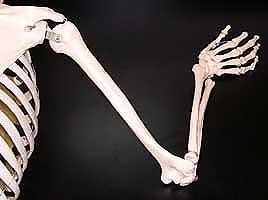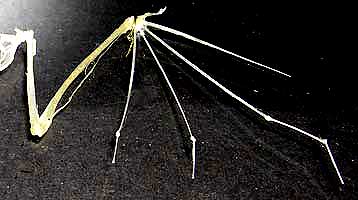|
|
Animal Adaptations: Homologous vs. Analogous Traits
|
|
Different species of living organisms often have similar physical features. These features are sometimes used for classification. Classifications that reflect evolutionary relationships are generally the most useful, because if you know about one organism in the group, you can make relatively accurate predictions about other group members, even if you haven't seen them before.
For example, all frogs are related to each other. Based on what you know about our local frogs, you can predict that most African frogs probably hop, like wet habitats, eat insects, and make chirping noises.
On the other hand, what if you had a group of organisms called 'greens', which included any animal that was mostly green? You'd have a hard time predicting the habits of all green animals based just on what you know about grasshoppers. Green coloration has evolved many times in many different groups of animals. It doesn't indicate that all green animals are closely related.
|
Homology
When organisms share a trait due to common ancestry, it is called a homologous trait. For example, all vertebrate animals (frogs, birds, fish, people) have skeletons because the ancestor of the vertebrates had a skeleton and passed that trait on to all of its descendants. |
 |
The bones of a human's front limb (left) are homologous to the bones of a bat's front limb (right). Note that both limbs end in five digits, and though some parts differ in size, both limbs have the same overall structure. |
 |
|
Analogy
Traits that are similar due to reasons other than relatedness are called analogous. Such similarities can result from random chance or because unrelated organisms have adapted to similar environments. |
|
Wings
There are many kinds of flying animals, including bats, birds, and various insects. All of these organisms have wings. Comparing the wing of these animals reveals more differences than similarities. Insects have two pairs of wings, while bats and birds each have one pair. Insect wings lack bones, but bird and bat wings have them. Butterfly wings are covered in scales, bird wings in feathers, and bat wings with bare skin. All of these organisms have adapted to life in the air and in doing so have evolved wings. Since wings have evolved independently in each of these groups, and don't indicate that they are closely related, the possession of wings is an analogous trait. |
 |
|
| |
|
|
|